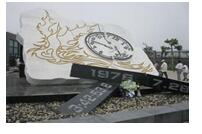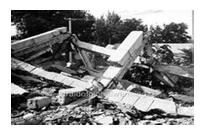英语合作学习初探
英语合作学习初探
季仲平
(江苏省通州高级中学,226300)
摘 要:合作学习,是教学过程控制中的一种教学策略,以学习过程中的学生之间的合作和互动为基本特征,提倡教师指导下的学生自主学习。将合作学习引入课堂,一定程度上改变了教学模式——教师不再一讲到底,学生不再被动接受,可以拓展学习空间、增强互助协作、提升学习自信。合作学习可以运用于教学的各个环节,包括预习环节、讨论环节、巩固环节、拓展环节等。
关键词:合作学习 内涵 意义 实践
一、理论认知:合作学习的内涵及意义
(一)内涵
美国著名教育家David Koonts在20世纪70年代提出了合作学习的概念并进行了实践。所谓合作学习,是教学过程控制中的一种教学策略,以学习过程中的学生之间的合作和互动为基本特征,提倡教师指导下的学生自主学习。它强调将学生个体间的竞争转变为学习小组间的竞争,将原先按学生个体记分的模式改为按小组整体记分的模式,并以学习小组总体的学习成绩作为评价依据。将合作学习引入课堂,一定程度上改变了教学模式——教师不再一讲到底,学生不再被动接受。
合作学习的前提是分组。教师可将学生根据学习需要相应分成若干小组,可以是按教室里的座位形成自然小组(如同桌两人一组、前后四人一组),也可以是灵活编排成开放式的小组(即学生根据自我需求随机组合成组)。合作学习中,教师要对分组活动的具体目的、实施内容、讨论时间、学习要求等进行精心策划,充分考虑学生的能力倾向、学业水平、个性特征等因素,并根据具体的学习内容以及学生的实际情况进行必要的指导。这一过程需注意的是:学生可以自我解决或者通过小组合作探究讨论的任务,教师不要急于代替;教师应帮助学生解决自己解决不了的问题,引领学生探究更深层次的内容。
(二)意义
第一,拓展学习空间。
第二,增强互助协作。
第三,提升学习自信。
二、实践探索:在英语教学中的运用
(一)预习环节
在课堂教学正式开始之前的预习环节,教师可将全班分成两大学习小组:一组负责整理课文的相关背景材料;另一组负责准备课文的陌生词汇。如果涉及的内容较多,教师可引导学生以PPT的形式把内容呈现出来。例如,预习人教版高中英语必修模块1(New Senior English For China Students’ Book1,简称“NSEFCSB1”)Unit 4 Earthquakes一课的内容时,教师按照单双学号将学生分成A、B两个学习小组,要求A组学生搜集与地震相关的背景资料、B组学生梳理课内外文本中的陌生词汇。
A组学生通过网络等途径整理了关于唐山大地震的文本资料:
Tangshan: The Deadliest Earthquake
At 3:42 a.m. on July 28, 1976, a magnitude 7.8 earthquake hit the sleeping city of Tangshan, in northeastern China. The very large earthquake, striking an area where it was totally unexpected, obliterated the city of Tangshan and killed over 240,000 people—making it the deadliest earthquake of the twentieth century.
When the 7.8 magnitude earthquake struck Tangshan at 3:42 a.m. on July 28, over a million people lay sleeping, unaware of the disaster that was to befall them. As the earth began to shake, a few people who were awake had the forethought to dive under a table or other heavy piece of furniture, but most were asleep and did not have time. The entire earthquake lasted approximately 14 to 16 seconds.
……
Survivors were faced with no water, no food, and no electricity. All but one of the roads into Tangshan was undrivable. Unfortunately, relief workers accidentally clogged the one remaining road, leaving them and their supplies stuck for hours in the traffic jam.
此外,还出示了关于唐山大地震的图片(见图1、图2):

图1

图2
B组学生梳理的课内外生词有:Water pipe、burst、event、in ruins、injured、destroyed、rescue、trap、electricity、disaster、dig out、bury、shelter、strike、deadly、unaware、scramble out、survivor、be faced with、undrivable、relief worker、supply等。
(二)讨论环节
课堂讨论环节,教师可以让学生以开放式分组(即自由组合)的形式,对预习中发现的问题或布置的任务展开充分讨论。仍以NSEFCSB1 Unit 4 Earthquakes一课为例,教师可让学生分组讨论地震产生的原因以及地震的危害性、地震在发生之前有哪些自然预兆、地震发生时我们应该怎样逃生和自救等问题。先四人一小组在组内进行第一轮讨论;再在全班展示各组讨论的结果,在全班进行第二轮讨论;最后,教师帮助整理各组学生的讨论结果,进行必要的总结。
围绕“地震发生时我们应该怎样逃生和自救”这一问题,学生的讨论结论如下:
1. Protect yourself first!
Once the earthquake happens protect yourself first. The life is the most important because where there is a life there is a hope. If you can’t easily escape by getting out the door or window. Then lie down and curl up in the position next to a sofa or a large chair. Be careful and wait the quake is over.
2. Keep calm.
Check all fire source. Put out fire quickly.
If you were using any sources of fire or heat, turn then off when the shaking calms down. When an earthquake happens, the pipe was always destroyed and there is no water, so must avoid the fire burning.
3. Panic can hurt you.
Be care of fallen furniture and broken glass.
In order to protect people from fallen furniture, some earthquake common regions attach cupboards and cabinets to wall. Just like Japan. Besides, putting heaven object in low position is also important.
4. Work together on rescue and first aid.
Work with your neighbors to free victims from under fallen furniture and to give first aid. But remember never go to the stairs, it is very dangerous, the stairs are a likely part of the building to be damaged. Even if the building doesn’t collapsed, stay away from the stairs.
(三)巩固环节
形式一:竞赛。通过合作学习的形式,每周或每两周组织一次竞赛活动,或举手抢答、或书面完成,巩固所学知识。获胜的小组,每位成员将会获得一定的奖励,鼓励所有的学生积极踊跃地投入到这项活动中来。
如NSEFCSB1 Unit 4 Earthquakes一课的教学,为进一步巩固书本知识点、语法点,可以设计一些问题让学生分小组竞猜:
1. What terrible disasters or consequences can big earthquakes cause?
Possible answers: tsunami, landslides, big fires...
2. What strange things might happen before big earthquakes?
Possible answers: well, deep cracks, animals, strange smell, bright light, large sound...
3. What should we do to protect ourselves in an earthquake?
Possible answers:...
学生可能答不全,只要答到其中一个就可以获得一份奖励,这样可以激发学生踊跃参与到活动中,更好地巩固所学。
形式二:演讲。教师可每月举行一次自由演讲比赛活动:先让小组中的每个成员在小组内进行演讲竞赛;根据竞赛成绩,每个小组最终推选出一位获胜学生上台演讲。
如学完NSEFCSB2 Unit 4 Wildlife protection后,安排学生分组讨论“如何保护野生动物”,由每个小组推选出一个代表作演讲,内容应包括全组同学提供的相关信息。
一位学生的演讲稿如下:
How to protect the wildlife
Wildlife faces threats from habitat destruction, pollution and other human actions. Although protecting wildlife can seem overwhelming(无法抵抗的)at times, small actions in your own neighborhood can help protect many different animals. As the saying goes, think globally and act locally. You can protect wildlife for future generations. Here are some instructions:
First of all, create wildlife friendly areas in your backyard. When choosing your lawn and landscaping, choose native plants that can provide food and shelter to native wildlife. This will also help cut down on pollution. Add bird or bat houses to your yard or garden to attract and shelter these species. Secondly, practise a greener lifestyle. By conserving water and fossil fuels, you will be helping to protect the wildlife around you. Take public transportation when you can, turn off electric devices when you're not using them, take shorter showers and keep your heat at or below 68 degrees during the winter. Become knowledgeable about what contributes to global warming and so on. Lastly, donate money or time to organizations that protect wildlife and their habitats. Join a community group that reestablishes native habitats for wildlife. You can give money to wildlife sanctuaries or other groups that protect wildlife species.
(四)拓展环节
合作学习可以帮助学生完成实践活动与研究性学习的任务。学生可以自然分组的形式,在教师的指导和帮助下,走出校园,参与到社区服务与实践活动中去。
比如,学习人教版高中英语选修模块6(New Senior English For China Students’ Book1,简称“NSEFCSB6”)Unit 4 Global Warming时,为了让学生了解自己所在地的环境和气候变化的具体数据,把学生分成若干小组来进行社会调查,各组任务如下:
小组一:去当地气象局,了解当地近几年来的气候变化,包括气温、雨量、自然灾害的发生频率等。
小组二:去当地公安局车辆管理所,了解当地近几年来的车辆数量的变化、尾气排放的大概总量。
小组三:去当地环保局,了解当地近几年来企业的二氧化碳排放总量的变化、对大气的影响程度。
小组四:上网或去图书馆查阅有关全球气候变暖的资料,以及近几年来联合国对温室气体排放的限制措施和要求。
各小组的调查任务完成后,由一位学生负责汇总并形成中英文对照的文字报告,包括当地的气候变化状况、形成温室效应的原因、联合国对温室气体排放的要求和我们应该采取哪些措施来限制温室气体排放等内容。报告初稿完成后,全班同学一起来修改;形成定稿后,上传到学校网站或编入学校英语校本教材中。
通过这样的社会实践活动,学生真正将英语应用到自己的生活中,既培养了学生的合作与探究精神,又增强了学生的环境保护意识,更激发了学生学英语、用英语的热情。

通州高级中学

用户登录